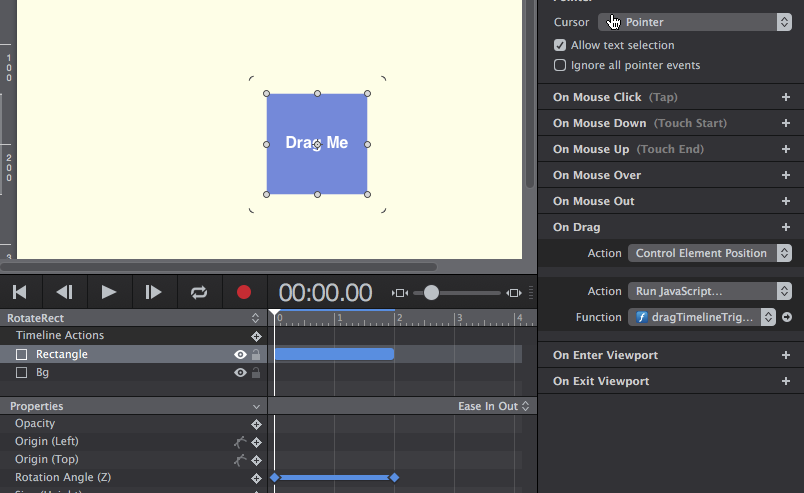Below is an example Demo project which does what (I believe) You are describing.
Demo here.
Hype Project: DragTriggerTimeline_JHSv1.hype.zip (15.4 KB)
Hype Documentation for Drag Events.
The Set-up:
**Code used in the Demo:**
function dragTimelineTrigger(hypeDocument, element, event) {
if(event['hypeGesturePhase'] == hypeDocument.kHypeGesturePhaseEnd) {
hypeDocument.startTimelineNamed(('RotateRect'), hypeDocument.kDirectionForward);
}
}
**EDIT:** Just saw your edit regarding no JavaScript if possible. If there is a way to do this without code I am not conversant with it. But really - the code above is so simple to implement - give it a go - check out the Hype Project Demo I did above. You do not have to be a JavaScript whiz - I'm not. Even if You just dip your toe into the JavaScript pool now and then, a whole new world of possibilities will open up.
